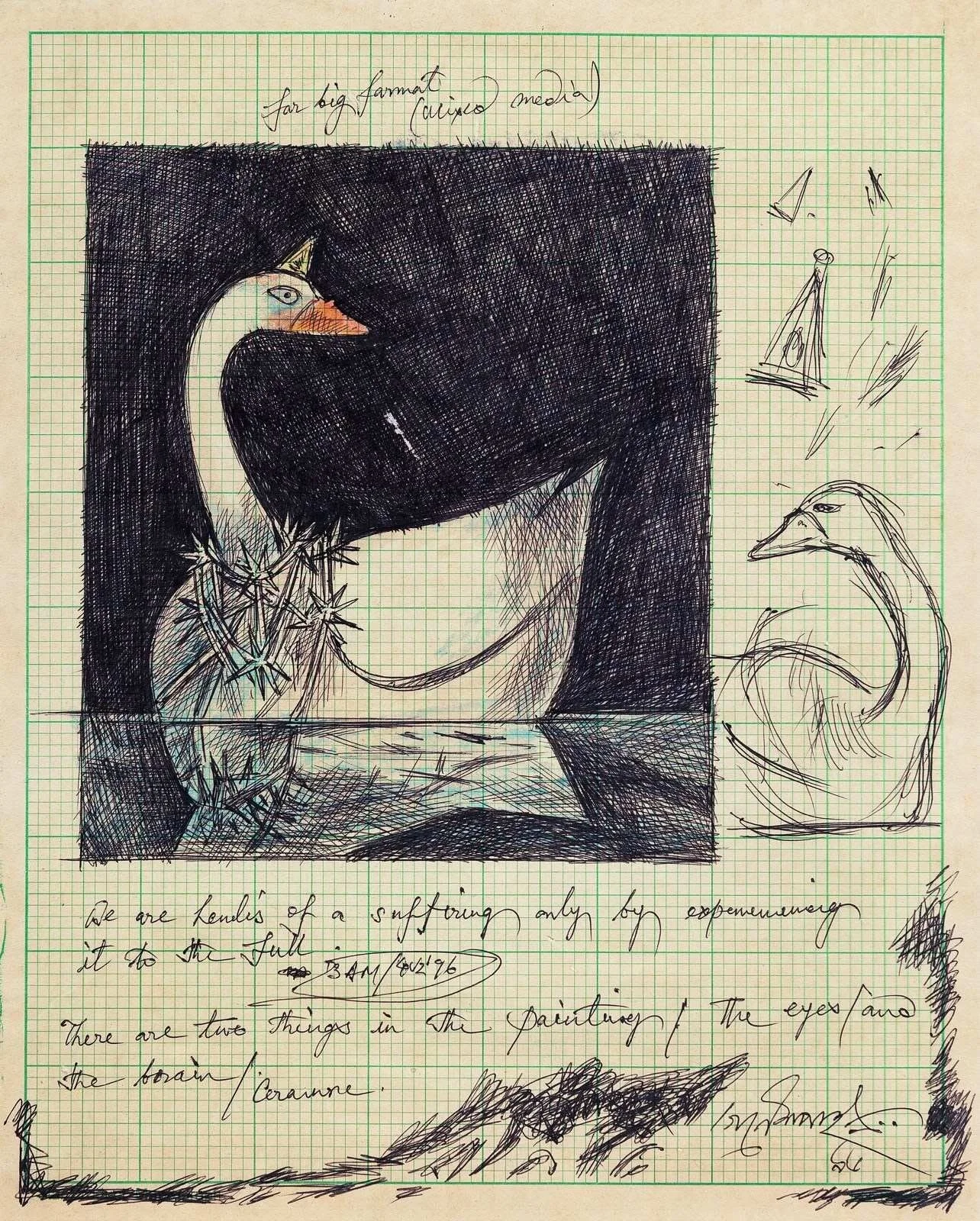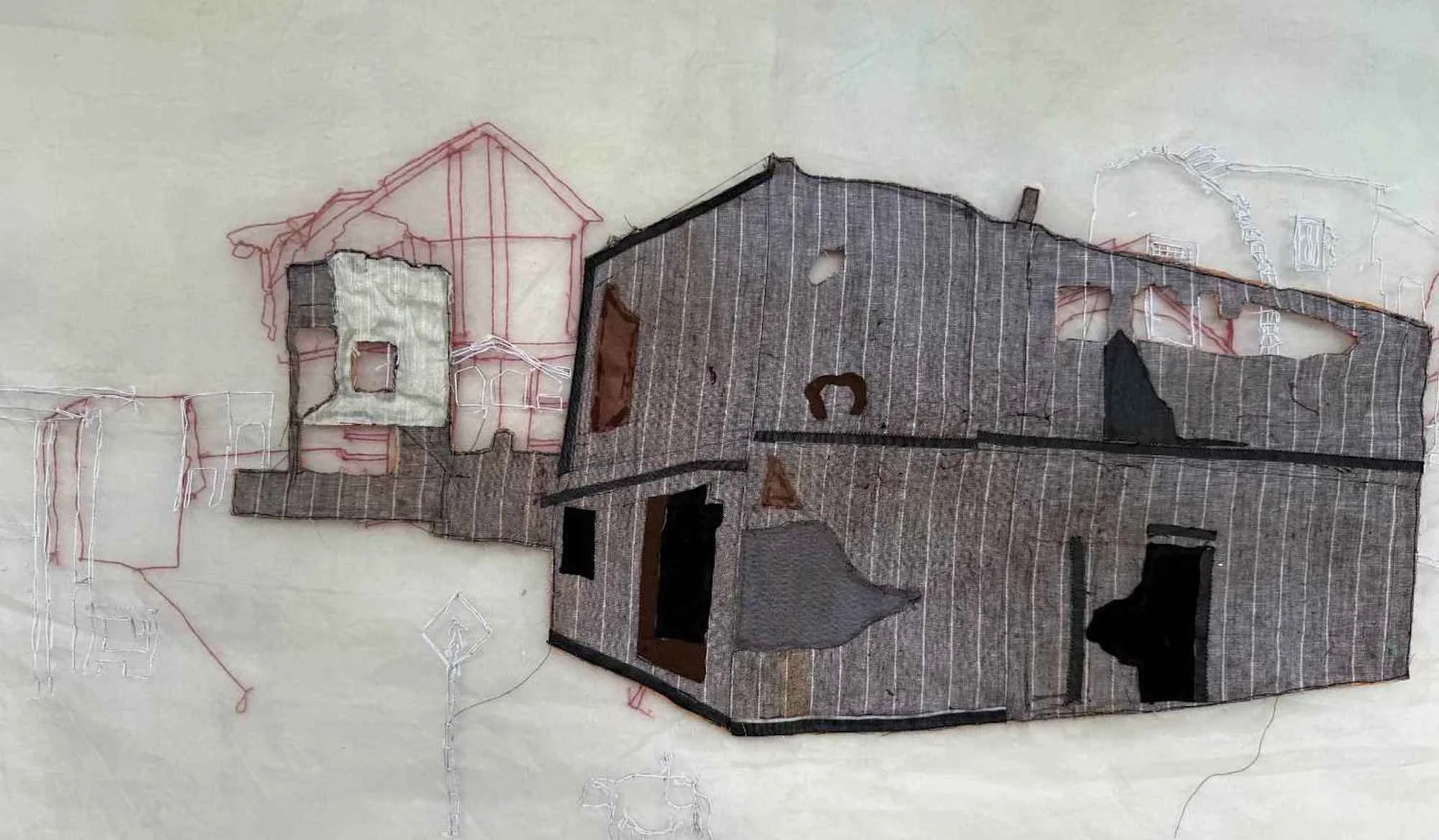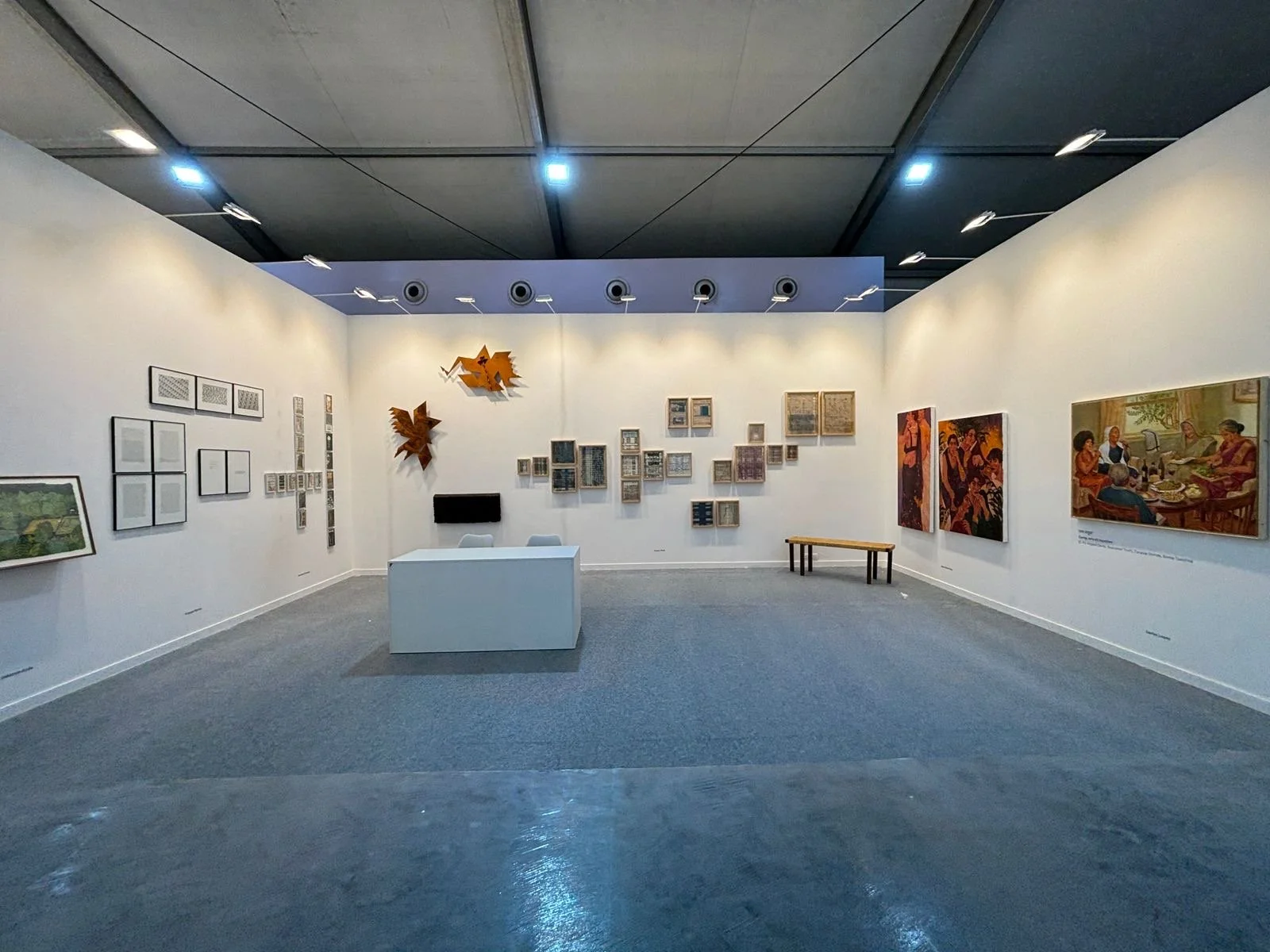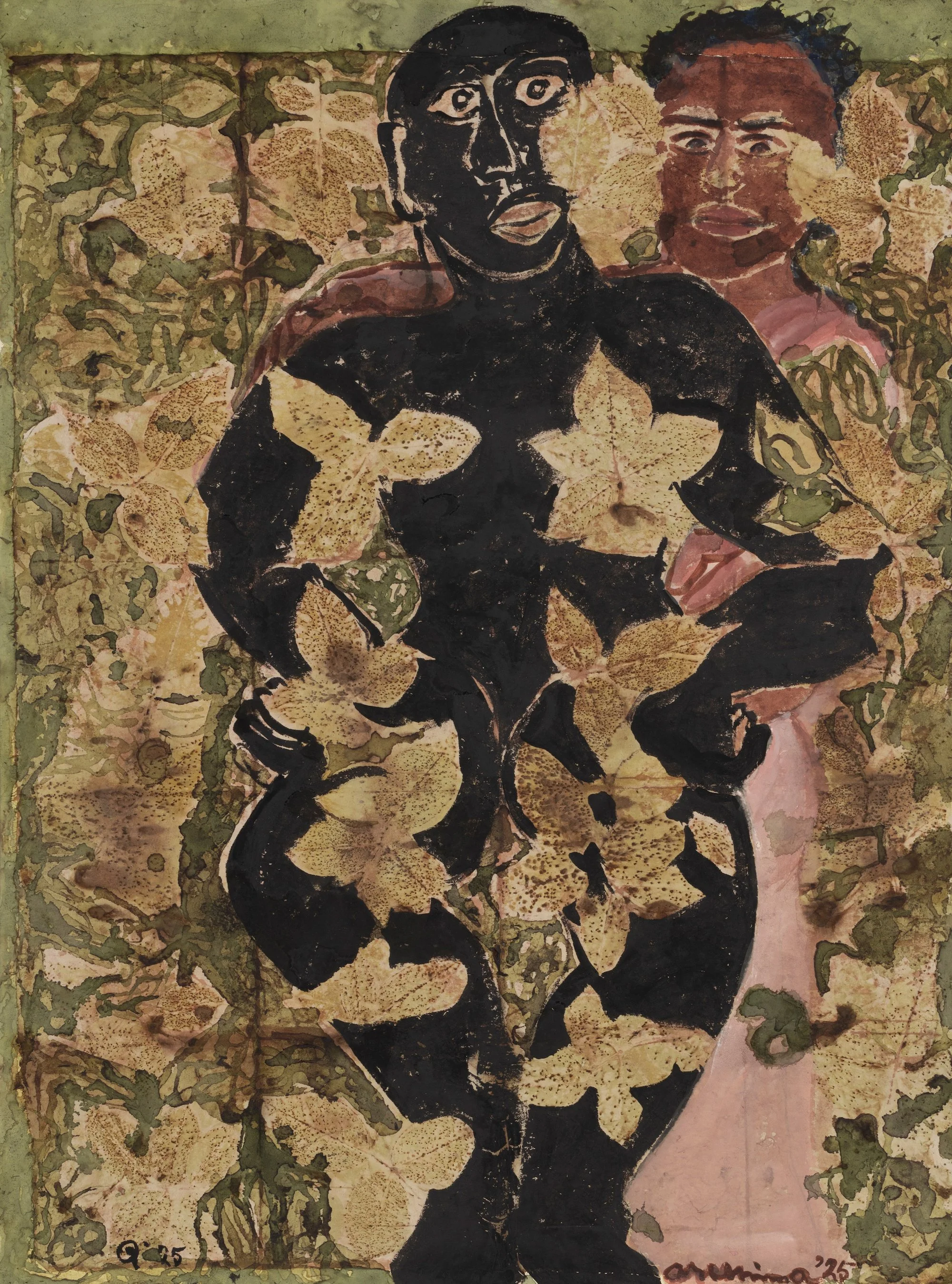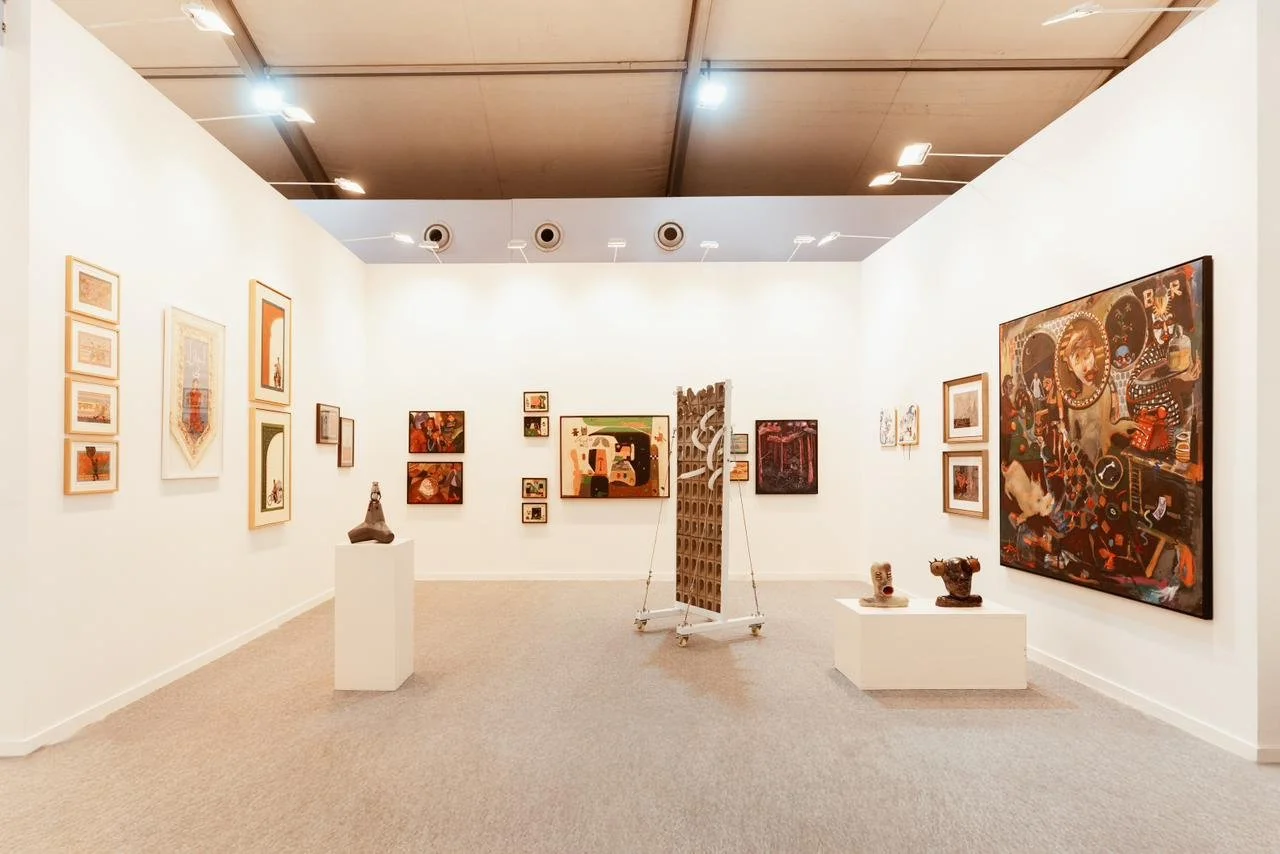Art Mumbai: A Quick Glance and a Second Look
Art Mumbai’s third iteration is a success for the participating galleries and artists, with South Asian art continuing to be the major highlight. With the recent boom in India’s art market, it is evident that there is also a lot more interest among a younger generation.
A rising trend in the booths is not just putting works on walls for sale but also carefully curating what should enter the collections of those leaning into the arts of South Asia. A curated booth serves artists, collectors, and the gallery's brand. While larger galleries showcase diversity, focused presentations help collectors understand artists better. In Mumbai’s thriving market of young collectors, coherent narratives resonate, and quite a few galleries excel at framing the moment without prescribing what art should be.
An example is Neeraja Poddar’s curation for Nature Morte’s booth from their available roster of artists—one that offers a museum-style approach to a breadth of forms and images, spanning from abstract fields by Bharti Kher to wall-mounted sculptural installations by Asim Waqif.
Not so far from Nature Morte’s booth, on one of Chatterjee and Lal’s outer walls, Gagan Singh’s intimate drawings immediately pique the viewer’s interest with delicately inked small, fantastical figures on an otherwise vast white expanse, and with a single glance inside, Nikhil Chopra’s large and depth-intensive painting of a fading forest on fire captures the visitor completely. The gallery is decisive and direct, and the booth is curated with a coherent color palette in mind. For either the mature collectors looking for something exciting or for first-time fairgoers, there is no room for confusion.
That said, range is not essentially a bad characteristic. For a gallery like Experimenter, with such a vast spectrum of different kinds of artists between interactive multimedia from Afrah Shafiq, unique magic realist paintings from Vikrant Bhise, abstract landscapes from Radhika Khimji, and abstract sculptures from Rathin Barman, something needs to be said about the masterful balancing acts visible in their display—whether it is through strategic use of walls or the dynamic placement of sculptures. They rank very high among those few galleries capable of producing a certain quiet ease in the navigation of their booths. They have built a world where one can go from Shafiq’s work in digital screens and pixel formats founded in game design, to Bhise’s huge paintings of human bodies and landscapes merging into abstract forms without feeling a break in reality. Gallerists Prateek and Priyanka Raja disclosed they had done exceptionally well this year, and also credited Art Mumbai for having become its best avatar yet.
Right across, Tarq shows artists such as Rithika Merchant and Soghra Khursaini. They have focused on womxn artists working with what is most consequential to their individual practices. There is an undercurrent of dialogue happening between ecology and social turmoil, as well as ponderings on how the body interacts with landscape. Merchant’s worldbuilding and philosophical considerations of the universe play into Khursaini’s meditation on natural elements that go beyond what meets the eye to reach almost an ethereal feeling.
Finally, bashing through every barrier is Art and Charlie, a much newer but extremely strong contender in India’s art scene. Founder Ayesha Parikh definitely has a keen eye for young artists and has taken exceptional care in highlighting each one—it is immediately evident how important they are to the gallery. Parikh says her expectations for the fair have been exceeded and blown out of the water in how massively encouraging the response has been. At the booth, Aksh Diwan Garg’s paintings offer beauty, anxiety, and the need to deliberate on sensuality and identity. His stardom is joined by Kumar Misal’s woven paper-and-string works, inspired by the Indian lungi and its many patterns from his village in Maharashtra. The artists and the gallery have shown themselves to be forces to be reckoned with and must be watched.
Emami Art is also worthy of special praise in this respect: Arunima Choudhury keeps her position as always with her beautiful natural color paintings of women in a nostalgic Bengal School influence, and Sibaprasad Karchaudhuri joins her on the central stage with his vast, abstract works exploring landscapes through fields of soft pastel and earth tones.
A collector claimed Art Mumbai is “just fabulous” and repeated the praise for the space, the people, and, of course, the art. The simplicity of this statement embodies the essence of the fair: it is a fun place for serious business.
On this topic of fun, there is a lot to do around the fair, including attending workshops, talks, and guided tours—there is even a wall set up for visitors to paint and draw on. Interactions that go beyond simply looking are exceedingly rare at art fairs, but Method is changing the game. On November 14th, they left out a set of oil pastels for people to draw with on their walls around the artworks of Vinayak Sarwankar. This was very much in the spirit of the artist’s works, which are playful and inviting, with subtle undertones that seem to implicate something repressed.
Interactions can also take forms beyond visceral engagement. Delhi Art Gallery moves and shocks with its motion and scale, a maze you want to get more and more lost in. The dark walls and various cozy nooks invite a more intimate look. A certain caricature by Chittaprosad Bhattacharya and a larger painting by Nirode Mazumdar were of particular interest, defining at once the tone and diversity in their range of focus. DAG’s consideration of history and culture has a strong presence, yet in their presentation, they are able to open up new realms of fantasy and imagination that beckon new representations.
Of special note in terms of 20th-century modern art are three other galleries. Akar Prakar invites their visitors with drawings by Amrita Sher-Gil, and then at a certain point, the gallery presents a series of exquisite little paintings by Gouri Bhanja—playful and delicate. Of course, a huge Raja Ravi Verma painting helps with the gravity of their pull. Art Exposure, whose main office and gallery is in Kolkata, presents a couple of works by Abanindranath and Gaganendranath Tagore, which is especially surprising given how rare it is to see any one of them. Last but still formidable is Subcontinent, showcasing six magnificent paintings by Winifred Strangman in the front.
A breathtaking display of works came from Anindita Bhattacharya at Threshold. Other artists deserving recognition and special mentions include multimedia works from Ram Dongre at Art Incept; abstract works from Rajnish Kaur at 1x1 Art Gallery; paintings by Yogesh Ramkrishna at Latitude 28; multimedia involving textile, weaving, and woodblock printmaking from Jayeeta Chatterjee at Chemould CoLab; and multimedia textile drawings from Hema Shironi at Shrine Empire.
A conversation between two friends overheard from a distance went as follows:
Friend 1: I don’t trust the ones where you have to go into smaller rooms to actually see things.
Friend 2: But do you want everything to be swipe-able? “I don’t like this”, swipe left? I don’t think everything needs to be condensed into one succinct frame to be a good booth. A little searching might be interesting.
Indeed, so many brilliant works are in fact inside smaller rooms or around unseen corners, and it takes an involved exploration to find much that could be missed on a straight walk around the booths—works such as Vikrant Bhise’s Dalit Panthers series at Anant Art. A slower pace is required to find the spectrum available at the fair.
“Swipe left”: indeed, a convenient way to define the present trend, but it only works for things that are “pretty” at face value. But the approach might fall flat beyond the superficial. Even beyond this, though, should art ever be about fast-paced transactions? Artworks need time. They demand time.
Mortimer Chatterjee of Chatterjee and Lal spoke of how the fair’s yearly improvements in production quality and outreach programs have helped reach new collectors and led to longer relationships and business. He added his appreciation of Art Mumbai and that it has been positive to see such improvements. Abhijit Lath of Akar Prakar emphasized similarly that it has been good. All said and done, one sentiment stands strong across the fair: interest in the arts is growing, and there is no shortage of enthusiasm.
Art Mumbai 2025 is on view between November 13th and 16th, 2025, at the Mahalaxmi Racecourse, Mumbai.

